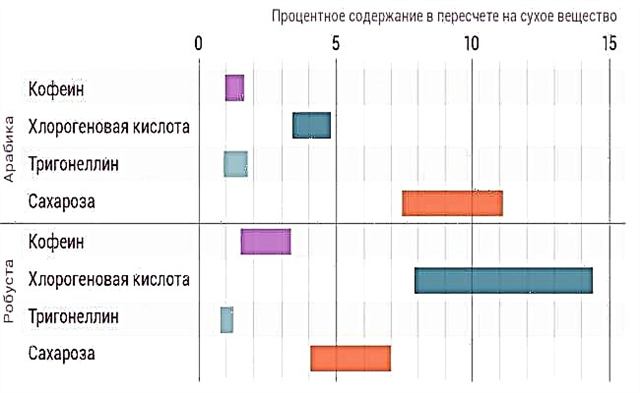How to clean the ears of a newborn - every young mother asked herself this question. Indeed, caring for a baby is a responsible business that requires care, delicacy and awareness. It is very important that the mother knows how to clean the ears of a newborn correctly, because inept care can provoke a number of otolaryngological problems in a child.
Often, parents take care of their children's ears in the same way as for their own - they wash with soapy water, clean with cotton swabs. This is the wrong approach, because anatomically, a child's ear is different from an adult's.
 So, the child's ear has a short wide auditory canal, and is devoid of bends that protect the eardrum. In addition, baby's skin is very delicate, as it has too thin a layer of the epidermis. That is why the child's ears require particularly careful care.
So, the child's ear has a short wide auditory canal, and is devoid of bends that protect the eardrum. In addition, baby's skin is very delicate, as it has too thin a layer of the epidermis. That is why the child's ears require particularly careful care.
We will show you how to clean the ears of newborns and babies accurately and correctly. After reading our recommendations, you can always be sure that cleaning the ears will not harm your child.
Daily care
Like an adult, a child needs daily hygienic care. When we wake up, the first thing we do is go to the bathroom. In the same way, a morning toilet is necessary for a baby - it invigorates, helps to wake up, and also prevents the accumulation of sebum, dust and dirt on the skin. Inflammation, diaper rash, rashes may appear on the child's contaminated skin, so it is necessary to cleanse it. In addition, bathing is also a hardening procedure. Thus, daily bathing is essential to keep the baby healthy.
When bathing, it's important to monitor the temperature of the water and use a dermatologist-recommended gentle cleanser for babies.
Ears, as well as eyes and nose deserve special attention while swimming.
These organs are very susceptible to infections, so only boiled water, disposable cotton pads or tampons should be used when washing them. Wet wipes "for children" are not suitable for this purpose - they can clean the skin, but not mucous membranes (including the mucous membranes of the lips, eyes, genitals, etc.).
Using harsh cleansers, overusing wet wipes, and cleaning your ears too hard will do more harm than good.
My ears are correct
How do I clean my baby's ears with daily bathing? Wipe the ears and the area behind them with a moistened cotton pad or swab. No liquid should be released from the cotton swab when pressed. This is important because water entering the ear canal is highly undesirable.  If water is still flowing into the ear, a dry cotton swab should be inserted into the ear canal for a few minutes - it will absorb moisture.
If water is still flowing into the ear, a dry cotton swab should be inserted into the ear canal for a few minutes - it will absorb moisture.
When bathing a child, you should not clean the ear canal from wax - firstly, this is not necessary, and secondly, frequent irritation of the skin of the auricles increases the activity of the sulfur glands, and in some cases provokes inflammation of the outer ear. Penetrating into the ear canal, you risk damaging the child's eardrum.
The less you interfere with the ear wax self-cleaning process, the better.
We clean the ears of a newborn and babies
Let's talk about how to clean the ears of a newborn. This procedure is best done after bathing, when the skin is moist and the sulfur is softened. Use cotton swabs slightly moistened with boiled water.
How often should a newborn's ears be cleaned? Enough once a week. With age, the frequency can be increased up to 2 times a week, but no more.
How to clean the ear of a baby from wax? While cleaning the auricle, slightly pull it back, straightening all the curves. Wipe all the folds of the auricle from the outside and from the inside. Sulfur often accumulates behind the tragus - carefully remove it. In this case, you do not need to penetrate the ear canal - only wipe the outer part of the ear. You can also use special baby cotton swabs. They have more rounded and larger heads than regular cotton swabs. There is a limiter on the head - a thickened area that does not allow the stick to penetrate deep into the ear canal. Use a separate cotton swab / swab for each ear, and if there is a lot of dirt, change it even more often.
How to clean babies' ears? The basic recommendations are the same as above. Usually, infants do not like having their ears cleaned. If the child is spinning, naughty, struggling, postpone the procedure until a more favorable time. You should not try to clear the ears of a child with hysteria - he can jerk his head and injure the ear. In addition, the baby may form unpleasant associations with this procedure if the cleansing is done by force.
What not to do:
- use ordinary cotton swabs, improvised items;
- trying to extract sulfur from deep sections
 the auditory canal - firstly, you can push it deeper, and secondly, you risk damaging the eardrum;
the auditory canal - firstly, you can push it deeper, and secondly, you risk damaging the eardrum; - pour soapy water, alcohol, cleaning drops into the ears (without a doctor's prescription);
- rubbing your skin too hard;
- use dry cotton wool, or vice versa, wet - the tampon should be slightly moistened;
- clean your ears from wax every day;
- use wax candles to extract sulfur (they are unsafe, especially for children).
We take care of the skin behind the ears
The area behind the ears is a rather problematic area of the skin in infants. It often has irritations, peeling, crusts. During daily bathing, the skin behind the ears should be wiped with a cotton swab dipped in boiled water. After water procedures, the skin should be blotted with a towel and dried well. For severely dry skin, moisturizing baby oils can be used.
Consider the common problems of the parotid zone of children and their causes:
- The appearance of crusts, which quickly become wet when bathing and can be easily removed with a damp cloth, indicates insufficient hygiene. These crusts are dried milk, feed mix, and exfoliated epidermis.
- Peeling and redness of the skin, the appearance of crusts, which are difficult and painful to remove, can be symptoms of allergic dermatitis. Allergies can be caused by complementary foods, as well as skin care products, washing powder, etc. Check with your pediatrician.
- Diaper rash indicates that either the baby is sweating a lot or the skin does not dry out well after bathing. In any case, this is a signal of insufficient air supply to the body. After water procedures, let the skin dry well, and only then put on a hat. Choose a hat for the weather - overheating stimulates sweating and bacteria growth on the skin. If the diaper rash is extensive and makes the baby uncomfortable, treat the skin with an antiseptic ointment.
- A rash behind the ears can be an early sign of allergies, atopic dermatitis, eczema, and other conditions. Both genetic factors and external factors play a role in the development of these diseases - chemical irritants, allergens, inadequate skin care.
On the one hand, nursing a baby should be thorough, and on the other, as gentle as possible.

 the auditory canal - firstly, you can push it deeper, and secondly, you risk damaging the eardrum;
the auditory canal - firstly, you can push it deeper, and secondly, you risk damaging the eardrum;

